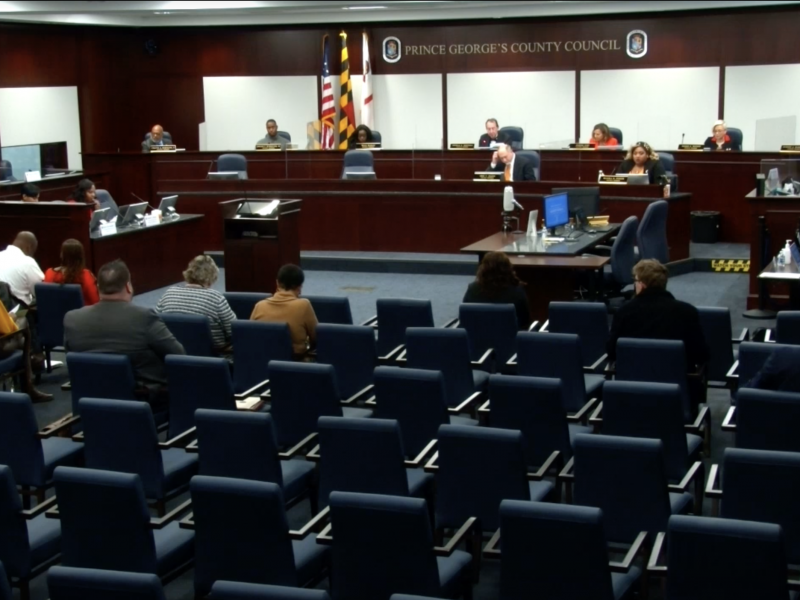Now a senior, Karen Guzman has commuted to the University of Maryland for her entire college career. She doesn’t regret it, either. She’s never had to deal with roommate drama and when the pandemic hit, she was already used to living at home.
Because of her choice, she’ll also be graduating debt-free. When she took a peek at what it would cost to live off-campus her freshman year, she knew right away it would not work with her budget.
“It’s just crazy amounts of money,” said Guzman, a secondary education major who lives about 15 minutes away from the campus, in Riverdale.
The availability of affordable housing options surrounding this university — or lack thereof — has long been a flashpoint for student advocates. While the monthly cost for a four-bedroom apartment in some apartment buildings, such as Mazza Grandmarc and College Park Towers, is less than $900, that price is over $1,200 at Terrapin Row.
The university’s Student Government Association has released a survey to collect data on rent rates in the area, which it plans to eventually use in its fight to make the city a more affordable place to live. In the meantime, however, some commuters say steep rent prices are what pushed them to live outside of the College Park area in the first place.
Take senior government and politics major Sasha Sytnikova, for instance. She tried renting a house with some friends after transferring to the university from Montgomery College last year, but they ultimately backed out. Since she couldn’t afford to live in the area on her own, she chose instead to live at home in Germantown and commute to the campus, a roughly 35-minute drive.
[In Vision 2030 plan, College Park aims to promote walkability, develop affordable housing]
As a sustainability minor, she has always been conscious of how commuting affects her carbon footprint. She contemplated using the commuter bus but it never lined up with her schedule.
“You have no idea how terrible I would feel about [the carbon emissions] everyday,” she said.
Senior environmental horticulture and bioinformatics major Alexis De Bleecker decided to try her hand at living on the campus after living at home for the first semester of her freshman year.
But after a semester of paying just over $3,000 to live in Wicomico Hall, De Bleecker — who is paying for college on her own — quickly decided it wasn’t worth it. The rent for off-campus apartments such as the Varsity was also out of her price range. And though it would be cheaper to rent space in a house, De Bleecke was discouraged by the poor conditions of many in the area.
“Any normal person could not afford to live on campus or around campus at all,” she said. “I think that’s hilarious.”
However, if housing were cheaper, De Bleecker would have loved to live on the campus. She’s worried she missed out on the traditional college experience and wonders whether she could have made more friends if she had decided against living at home.
She’s not the only one who feels that way.
[College Park City Council discusses plans for long-stalled affordable housing project]
Junior geographical sciences major Markus Tarjamo transferred to this university last fall from the College of Southern Maryland. He lives in Waldorf, which is about an hour’s drive from the campus, depending on the traffic. During his first semester, he held a job in the school’s IT department and commuted because it was more economically prudent.
But when classes return to in-person instruction, he says he’d like to live near the school to have a taste of the traditional college experience that he didn’t get at Southern Maryland, where he also commuted.
Though he attended Salisbury University before Southern Maryland, he didn’t have the social life he was looking for, since he lived on the outskirts of the campus. Still, the monthly rent he paid exhausted the loans and grants he received to attend school. Now, he’s worried there won’t be enough left to allow him to live near this university.
Tarjamo said he’s noticed that developments in College Park tend to be upscale housing, rather than places where the average student or worker could afford to live. But he hasn’t given up hope on finding affordable housing in the area quite yet.
“I am sort of holding on,” he said. “Maybe I’ll be able to live on campus in the fall or the spring of next year.”
This story is part of an ongoing series The Diamondback will be covering this semester on housing costs in the College Park area.



